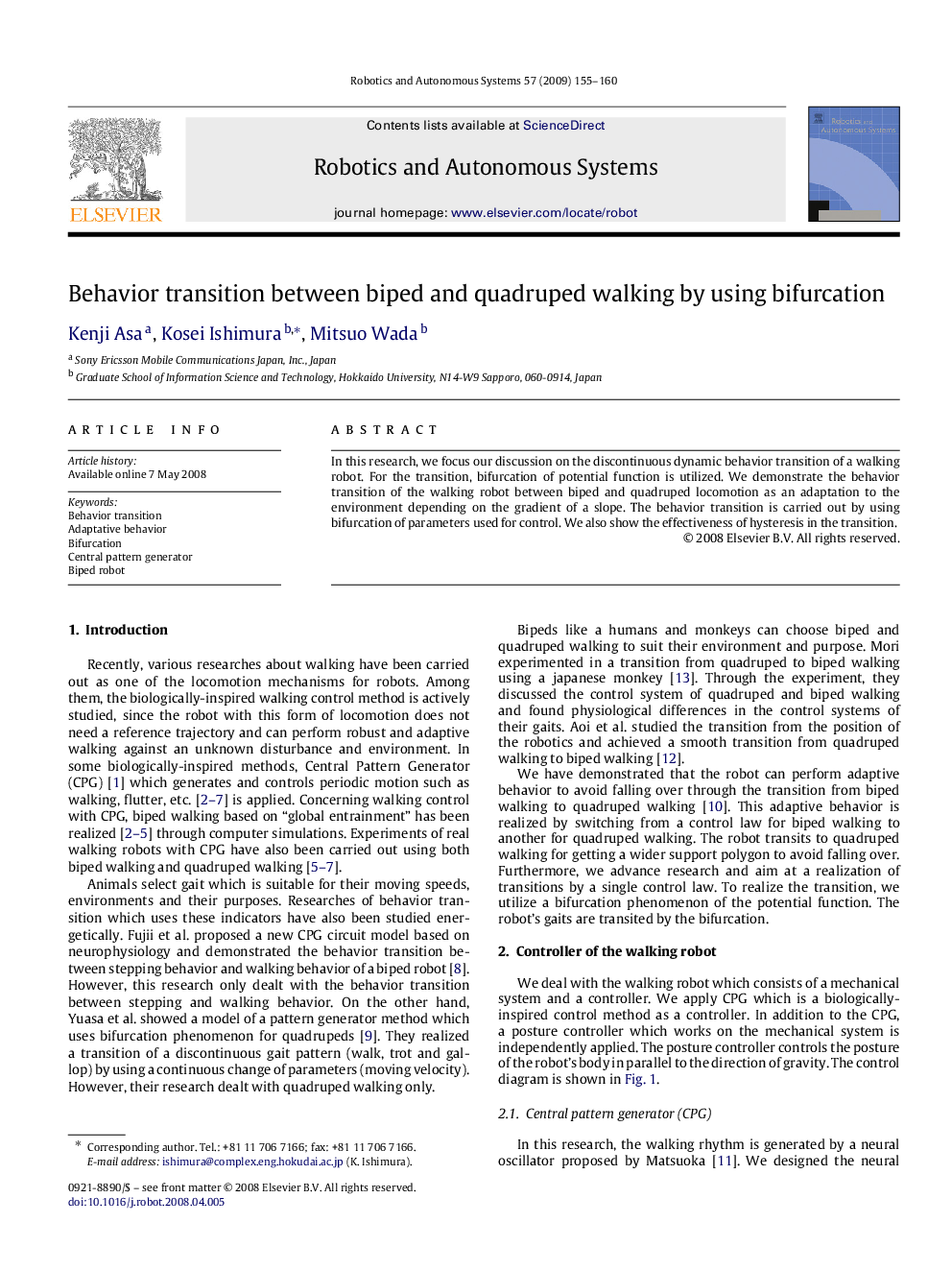| Article ID | Journal | Published Year | Pages | File Type |
|---|---|---|---|---|
| 413517 | Robotics and Autonomous Systems | 2009 | 6 Pages |
Abstract
In this research, we focus our discussion on the discontinuous dynamic behavior transition of a walking robot. For the transition, bifurcation of potential function is utilized. We demonstrate the behavior transition of the walking robot between biped and quadruped locomotion as an adaptation to the environment depending on the gradient of a slope. The behavior transition is carried out by using bifurcation of parameters used for control. We also show the effectiveness of hysteresis in the transition.
Related Topics
Physical Sciences and Engineering
Computer Science
Artificial Intelligence
Authors
Kenji Asa, Kosei Ishimura, Mitsuo Wada,
